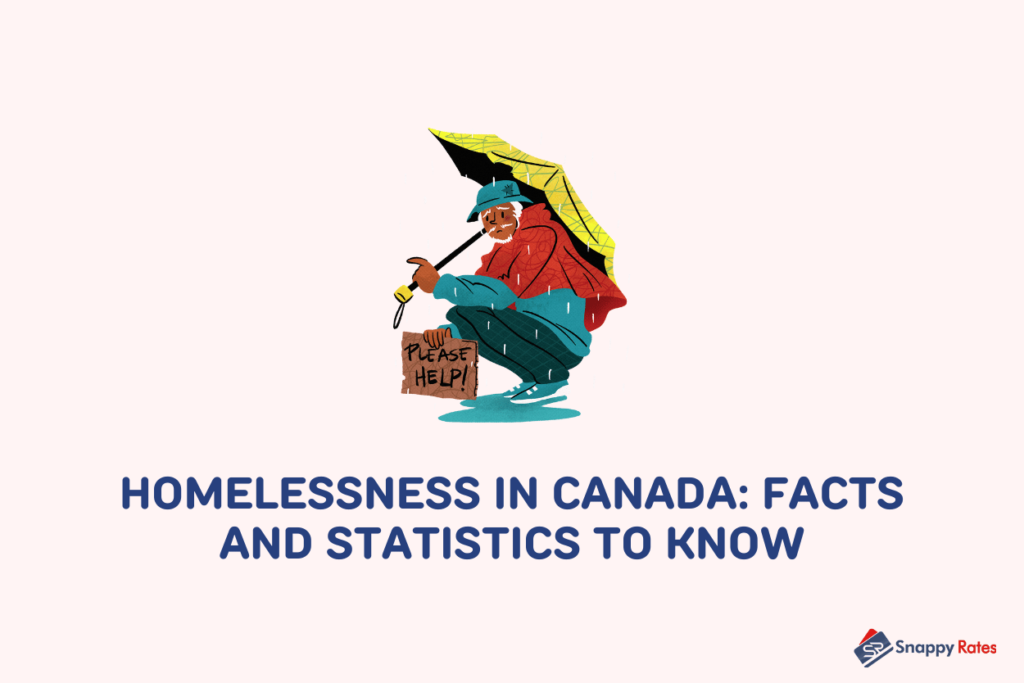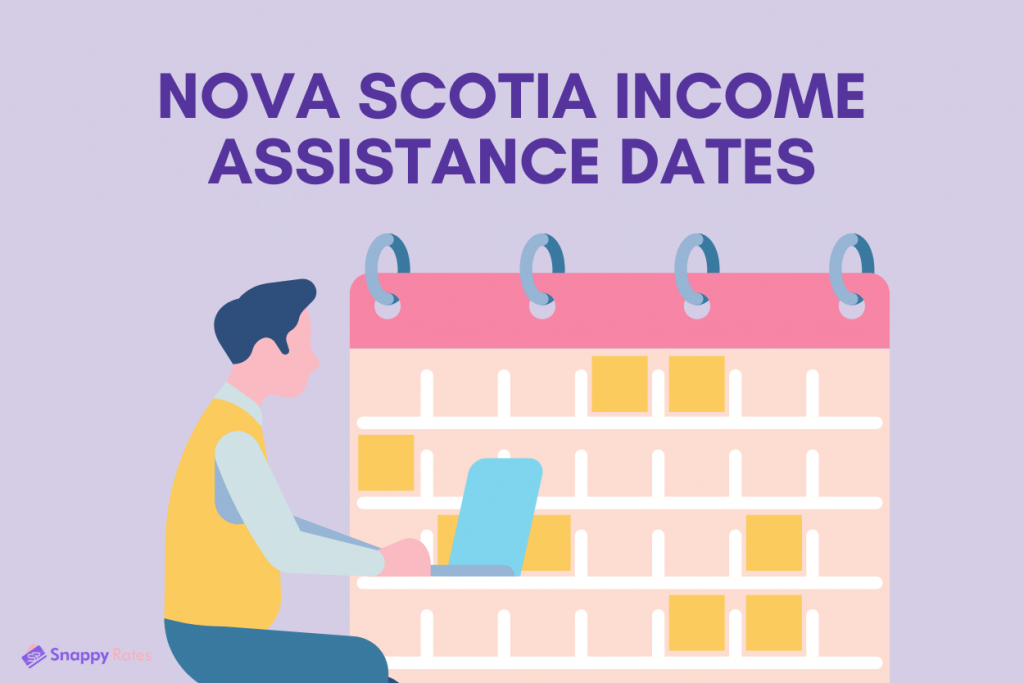Homelessness can have a devastating impact on individuals, families, and communities. Homeless individuals are often vulnerable to physical and mental health problems, social isolation, and discrimination.
By learning more about homelessness in Canada, you can better understand the challenges those experiencing homelessness face and collaboratively find solutions to improve their lives.
Homelessness is a global issue. If you care about social justice, equality, and humanity, then it is important to understand how homelessness impacts those around you.
Understanding the impact of homelessness in Canada can help you better your community and aid our country in becoming a more hospitable place to people of all income levels.
Homelessness in Canada
Homelessness is a serious and ongoing issue in Canada. According to Statistics Canada, an estimated 235,000 Canadians experience homelessness yearly, with up to 35,000 individuals experiencing homelessness on any night. The causes of homelessness in Canada are complex and multifaceted.
Homelessness in Canada can also disproportionately impact certain groups, including Indigenous peoples, youths, and women.
Indigenous peoples are overrepresented among the homeless population and are up to eight times more likely to experience homelessness than others. In addition to a lack of housing, homelessness has many other consequences.
Homeless people – but especially youths – are at high risk of experiencing violence, exploitation, and other harm. Women who are homeless may face additional challenges related to safety, health, and access to services.
Efforts to address homelessness in Canada have included initiatives such as building more affordable housing, providing support services for individuals experiencing homelessness, and increasing access to mental health and addiction treatment.
Despite these efforts, homelessness remains a persistent problem in Canada. More work is needed to ensure that all Canadians have access to safe, affordable housing and the support they need to thrive.
Homelessness in Canada Facts and Statistics
Understanding the scope of Canada’s homelessness crisis is important regarding the gravity of the issue. To further your knowledge, here are additional facts and statistics about homelessness in Canada:
- Homelessness can significantly impact health, with homeless individuals having a mortality rate four to five times higher than that of the general population.
- Homeless youth are particularly vulnerable, with approximately 6,000 to 7,000 youth experiencing homelessness on any night in Canada.
- Women who are homeless may face unique challenges, including a higher risk of violence and exploitation.
- Homelessness can also have economic impacts, with an estimated cost of up to $7 billion annually in emergency services, healthcare, and criminal justice costs.
- Unaffordable housing contributes to homelessness, with nearly 1 in 5 Canadian households spending more than 50% of their income on housing.
While these statistics paint a sobering picture of the scope and impact of homelessness in Canada, it is important to remember that many organizations and initiatives are working to address this issue and improve outcomes for those affected by homelessness.
What is the Main Cause of Homelessness in Canada?
The causes of homelessness in Canada are complex and multifaceted, and no single cause can be pinpointed as the leading cause. Homelessness in Canada results from individual, structural, and systemic factors, including poverty, lack of affordable housing, mental illness, addiction, and other social and economic factors.
Poverty and lack of affordable housing are often cited as significant contributing factors to homelessness in Canada. In many parts of the country, housing costs have risen faster than incomes, making it increasingly difficult for low-income individuals and families to find and maintain stable housing.
For individuals living on a fixed or limited income, even a minor financial setback, such as a job loss or unexpected expense, can make it difficult to pay rent or afford other necessities, leading to housing insecurity and homelessness.
In addition to economic factors, mental illness, addiction, trauma, and societal and structural discrimination also contribute to homelessness in Canada.
Individuals experiencing mental health and addiction issues may struggle to find and maintain stable housing and face stigma and discrimination that can exacerbate their situation.
For Indigenous peoples, colonization, residential schools, and ongoing systemic discrimination can contribute to homelessness and housing insecurity.
Many organizations and initiatives are working to address the complexities of homelessness and improve outcomes for those experiencing homelessness.
These efforts include increasing access to affordable housing, providing support services for individuals experiencing homelessness, and addressing systemic factors that contribute to housing insecurity and poverty.

Is Homelessness Increasing in Canada?
The number of people experiencing homelessness across Canada has increased in recent years.
For instance, Toronto has seen an increase in homelessness because of the COVID-19 pandemic. Toronto’s shelter system now accommodates approximately 2,000 more people each night than in April 2021.
While it is challenging to assess homelessness trends at a national level, some data suggests that the problem may be worsening.
Solutions for Homelessness in Canada
Ending homelessness in Canada requires an intersectional, multifaceted approach that addresses the issue’s root causes, provides support services for individuals experiencing homelessness, and increases access to affordable housing. Here are some proposed solutions to address homelessness in Canada:
Increase Affordable Housing
Addressing the lack of affordable housing is vital to reducing homelessness in Canada. Initiatives to increase affordable housing include investing in social housing, offering rental subsidies, and encouraging the development of affordable housing by private developers.
Provide Support Services
Individuals experiencing homelessness often face complex challenges related to mental health, addiction, and trauma. Providing access to support services, such as mental health and addiction treatment, can help individuals transition out of homelessness and maintain stable housing.
Support Indigenous-Led Solutions
Indigenous peoples are overrepresented among Canada’s homeless population. Addressing this overrepresentation requires accounting for the historical and systemic discrimination Indigenous communities have faced, which is directly tied to the community’s unique experiences and needs.
Supporting Indigenous-led solutions to homelessness can help ensure that solutions are culturally appropriate, historically responsive, and effective.
These are just a few potential solutions to address homelessness in Canada. Homelessness can be solved with a multifaceted approach that can improve outcomes for those experiencing homelessness.
Homelessness in Canada vs. the U.S.
Homelessness is a significant issue in Canada and the United States, but there are some key differences in how each country experiences and addresses the issue.
The scale of homelessness varies in each country. In Canada, around 40,000 individuals experience homelessness on any night. In the United States, an estimated 580,400 people experienced homelessness on a single night in January 2020, more than ten times the number of Canadians experiencing homelessness.
Each country addresses homelessness differently. The Canadian government has made significant investments in affordable housing and homelessness initiatives, and many cities and communities have implemented strategies to address the issue.
In the United States, however, there is less centralized funding and policy support for homelessness initiatives, with much of the responsibility falling on state and local governments.
The individuals in each country also experience homelessness differently. In Canada, most individuals experiencing homelessness use emergency shelters or other temporary housing options. In the United States, however, many individuals remain unsheltered, living on the streets or in encampments.
While there are some key differences in how homelessness is experienced and addressed in Canada and the United States, the underlying causes and impacts of the issue are similar in both countries.
Addressing homelessness requires a multifaceted approach that addresses the problem’s root causes, provides support services for individuals experiencing homelessness, and increases access to affordable housing – that is true in both countries.
FAQs
How common is homelessness in Canada?
Homelessness is a significant and ongoing issue in Canada, with an estimated 35,000 individuals experiencing homelessness on any night and 235,000 Canadians experiencing homelessness each year.
What city in Canada has the most homelessness?
While homelessness is an issue in many cities across Canada, Toronto has been identified as having the highest rate of homelessness per capita. In 2019, over 8,000 homeless people were living in the city.
What services does Canada offer to fight homelessness?
The federal government has also launched initiatives such as the Reaching Home program, which provides funding and support for community-based initiatives to address homelessness and aims to reduce homelessness by 50% by 2028.
Related:





